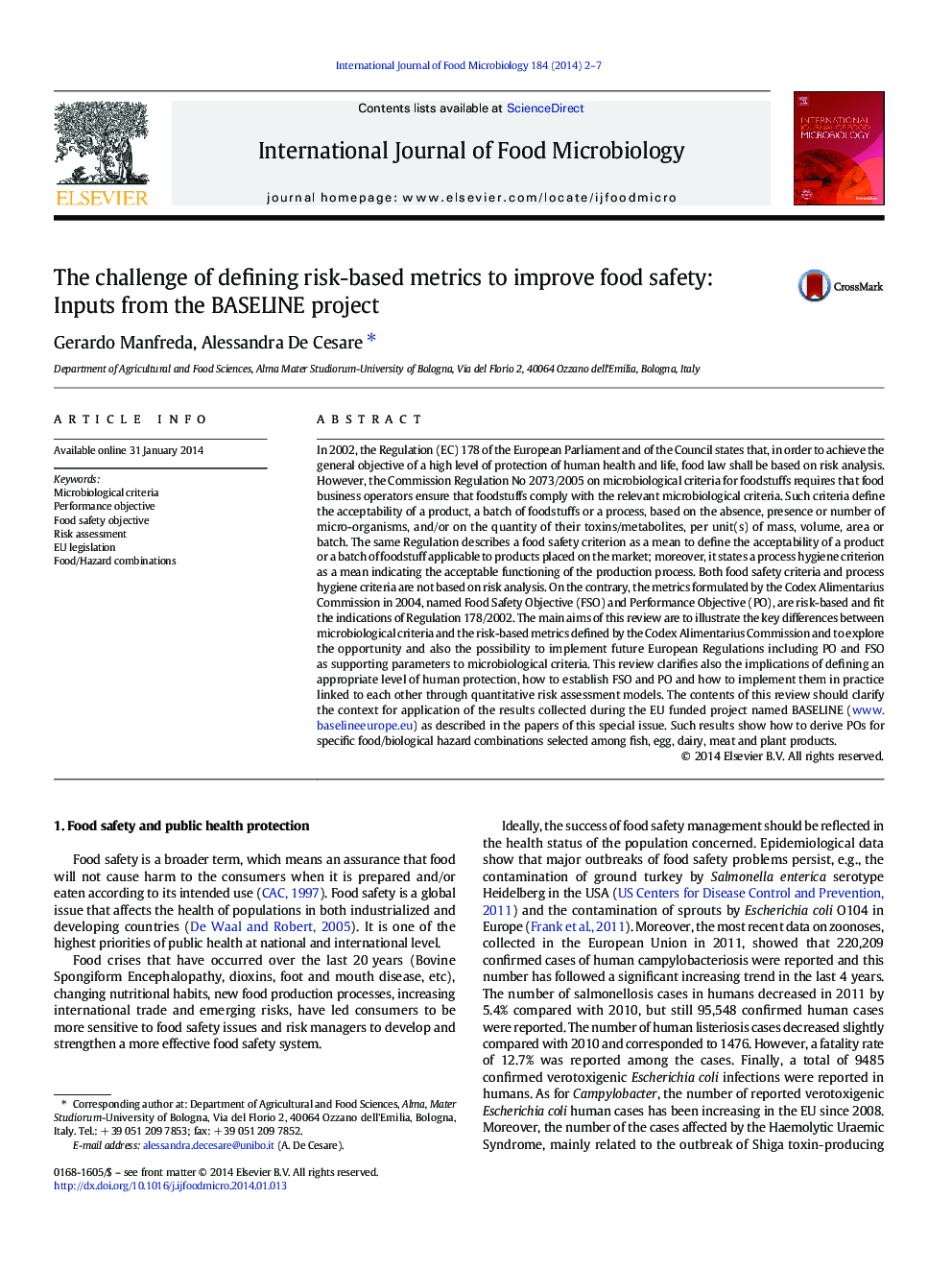| Article ID | Journal | Published Year | Pages | File Type |
|---|---|---|---|---|
| 4366867 | International Journal of Food Microbiology | 2014 | 6 Pages |
•The impact of risk analysis on food legislation should be improved in the future.•PO and ALOP should be linked through quantitative microbiological risk assessment models.•QMRA development requires assessment of variability and uncertainty.•EU legislations should include PO values.
In 2002, the Regulation (EC) 178 of the European Parliament and of the Council states that, in order to achieve the general objective of a high level of protection of human health and life, food law shall be based on risk analysis. However, the Commission Regulation No 2073/2005 on microbiological criteria for foodstuffs requires that food business operators ensure that foodstuffs comply with the relevant microbiological criteria. Such criteria define the acceptability of a product, a batch of foodstuffs or a process, based on the absence, presence or number of micro-organisms, and/or on the quantity of their toxins/metabolites, per unit(s) of mass, volume, area or batch. The same Regulation describes a food safety criterion as a mean to define the acceptability of a product or a batch of foodstuff applicable to products placed on the market; moreover, it states a process hygiene criterion as a mean indicating the acceptable functioning of the production process. Both food safety criteria and process hygiene criteria are not based on risk analysis. On the contrary, the metrics formulated by the Codex Alimentarius Commission in 2004, named Food Safety Objective (FSO) and Performance Objective (PO), are risk-based and fit the indications of Regulation 178/2002. The main aims of this review are to illustrate the key differences between microbiological criteria and the risk-based metrics defined by the Codex Alimentarius Commission and to explore the opportunity and also the possibility to implement future European Regulations including PO and FSO as supporting parameters to microbiological criteria. This review clarifies also the implications of defining an appropriate level of human protection, how to establish FSO and PO and how to implement them in practice linked to each other through quantitative risk assessment models. The contents of this review should clarify the context for application of the results collected during the EU funded project named BASELINE (www.baselineeurope.eu) as described in the papers of this special issue. Such results show how to derive POs for specific food/biological hazard combinations selected among fish, egg, dairy, meat and plant products.
